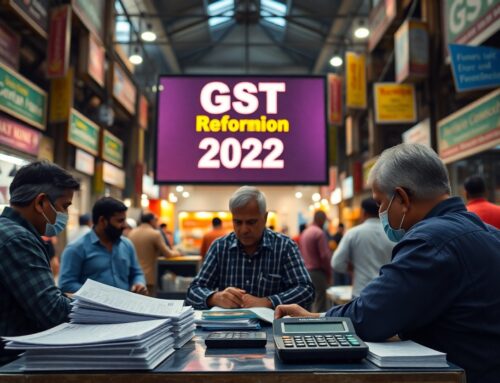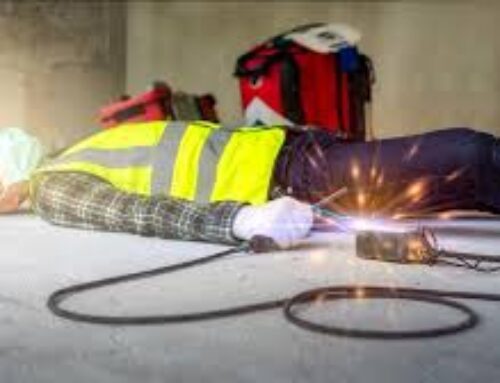– Abul Kalam Azad Sulthan, Advocate, High Court of Judicature at Madras and Madurai Bench of Madras High Court & Partner, Spicy Law Firm.
Most professionals in finance and law, like you, understand the critical role Asset Reconstruction Companies (ARCs) play in recovering bad debts efficiently. By leveraging the SARFAESI Act, ARCs have powerful tools at their disposal to expedite the debt recovery process. In this article, you will gain valuable insights into how ARCs utilize the SARFAESI Act to manage non-performing assets effectively, making it a must-read for anyone involved in debt recovery and financial restructuring.
Key Takeaways:
- Efficient debt recovery: Asset Reconstruction Companies (ARCs) can effectively recover bad debts by leveraging the SARFAESI Act, which allows them to enforce security interests without court intervention.
- Resolution of Non-Performing Assets (NPAs): ARCs play a significant role in resolving NPAs in the banking system by acquiring these assets from banks and financial institutions and then working towards their recovery.
- Important financial intermediaries: ARCs act as crucial financial intermediaries by assisting in the resolution of distressed assets, which ultimately helps in improving the overall health of the banking sector.
Background of Asset Reconstruction Companies
Definition and Purpose
Purpose: Asset Reconstruction Companies (ARCs) are financial institutions that specialize in acquiring non-performing assets (NPAs) from banks and financial institutions. Their primary purpose is to help in the resolution of distressed assets by purchasing these bad loans at a discounted price from the banks, thereby providing liquidity to the banking system.
ARCs play a crucial role in the Indian financial system by aiding in the recovery of bad debts, which helps banks clean up their balance sheets and focus on their core banking activities. By taking over these distressed assets, ARCs free up the resources of the banks, allowing them to lend more efficiently and effectively.
These companies operate under the Securitisation and Reconstruction of Financial Assets and Enforcement of Security Interest (SARFAESI) Act, which empowers them to take possession of the assets of defaulting borrowers and facilitate the recovery process, ensuring a more streamlined and effective mechanism for resolving bad debts.
History and Evolution
Companies: Asset Reconstruction Companies were introduced in India in the late 1990s as a response to the growing problem of NPAs in the banking sector. The government, in collaboration with the Reserve Bank of India, recognized the need for specialized institutions that could focus on the resolution of distressed assets.
The evolution of ARCs in India has been significant, with these companies playing a pivotal role in addressing the issue of bad loans in the banking system. Over the years, ARCs have become an integral part of the financial ecosystem, aiding in the resolution of NPAs and contributing to the overall health of the banking sector.
The SARFAESI Act: A Game-Changer for Debt Recovery
You hold in your hands a powerful tool that can significantly impact debt recovery processes – the Securitisation and Reconstruction of Financial Assets and Enforcement of Security Interest (SARFAESI) Act. This legislation empowers Asset Reconstruction Companies (ARCs) to take swift action in recovering non-performing assets, providing a mechanism for banks and financial institutions to deal with bad loans efficiently.
Key Provisions and Amendments
The SARFAESI Act, enacted in 2002, underwent key amendments in 2016 to further strengthen the debt recovery framework. The amendments widened the scope of security interest to include movable properties, making it easier for ARCs to seize assets in default. Additionally, the introduction of the Central Registry has streamlined the process of creating security interests, enhancing transparency and efficiency in debt recovery.
Impact on Debt Recovery Process
Impact on Debt Recovery Process
The SARFAESI Act has revolutionized the debt recovery landscape, enabling lenders to take control of defaulting assets without court intervention. By providing a **firmer legal ground** for asset seizure, ARCs can expedite the recovery process, reducing the burden on the banking system. The Act’s provision for issuing **demand notices** to borrowers has incentivized timely repayment, offering a balanced approach to debt recovery.
A significant impact of the SARFAESI Act is the **deterrence it creates against defaulters**, as the threat of asset seizure prompts borrowers to adhere to repayment schedules. This proactive approach not only enhances the efficiency of debt recovery but also instills **discipline** among borrowers, fostering a healthier credit environment. With **quicker resolution** of non-performing assets, the SARFAESI Act plays a pivotal role in maintaining the financial stability of institutions and bolstering the overall economy.
Leveraging SARFAESI Act for Effective Debt Recovery
Strategies for Asset Reconstruction Companies
Leveraging the SARFAESI Act effectively can significantly enhance debt recovery for Asset Reconstruction Companies (ARCs). By utilizing the provisions of the Act, you can expedite the process of recovering non-performing assets (NPAs) by seizing and selling the secured assets without court intervention. This streamlines the recovery process and reduces the time and resources required for legal proceedings.
Moreover, you can employ strategic approaches such as conducting due diligence to assess the quality of assets, negotiating with defaulters for settlements, and collaborating with valuation experts to ensure optimal asset realization. By implementing these proactive strategies, you can increase the success rate of debt recovery and optimize the returns on acquired NPAs.
Additionally, establishing robust internal processes and leveraging digital technologies can enhance the efficiency and transparency of debt recovery operations. By integrating advanced data analytics and automation tools into your processes, you can streamline asset identification, valuation, and recovery procedures, making the debt recovery process more agile and cost-effective.
Benefits of SARFAESI Act in Debt Recovery
Leveraging the SARFAESI Act provides unique advantages for debt recovery, such as empowering you to take possession of collateral security without court intervention. This **expedites** the recovery process and **minimizes** delays typically associated with traditional legal proceedings. Additionally, the Act enables you to enforce security interests effectively, **improving** the overall recovery rate and **reducing** the risk of asset value erosion.
Furthermore, the SARFAESI Act grants you the authority to issue notices to defaulting borrowers, providing them with an opportunity to regularize the loan. This **promotes** transparency and fairness in the debt recovery process, fostering better borrower relationships and potentially facilitating quicker settlements. By leveraging these provisions, you can maximize recovery outcomes and mitigate risks associated with prolonged recovery cycles.
Plus, the SARFAESI Act empowers you to bypass the cumbersome legal system and take direct action against defaulters, **enhancing** your ability to recover dues efficiently. This autonomy enables you to proactively manage NPAs and expedite the resolution of distressed assets, **strengthening** your overall debt recovery framework and **optimizing** your portfolio performance.
Challenges and Opportunities
Now, let’s probe into the challenges and opportunities faced by Asset Reconstruction Companies (ARCs) in leveraging the SARFAESI Act for debt recovery.
Overcoming Hurdles in Debt Recovery
Hurdles in debt recovery can be daunting, from dealing with uncooperative defaulters to navigating legal complexities. However, with determination and strategic planning, you can overcome these obstacles. Utilizing the SARFAESI Act effectively can empower you to take swift actions against defaulters, leading to quicker resolutions. Building strong relationships with stakeholders and fostering a transparent communication channel can also help in gaining their trust and cooperation during the recovery process.
Future Prospects for Asset Reconstruction Companies
An expanding market and the growing need for debt resolution services present a plethora of opportunities for ARCs. By leveraging advanced technologies like data analytics and machine learning, you can enhance your debt recovery strategies and improve efficiency. Diversifying your portfolio and exploring new asset classes can also open up avenues for higher returns and sustainable growth. Embracing regulatory changes and staying updated on market trends will be crucial in positioning your ARC for long-term success.
To succeed in the ever-evolving landscape of debt recovery, you must adapt to changing market dynamics and embrace innovation. By investing in training and development programs for your team, you can ensure they are equipped with the necessary skills to meet future challenges head-on. Collaborating with other financial institutions and industry experts can provide valuable insights and opportunities for growth. By staying agile and proactive, you can position your ARC as a trusted partner in debt resolution for years to come.
To wrap up
As you navigate the world of debt recovery and distressed assets, understanding the role of Asset Reconstruction Companies (ARCs) and the power vested in them through the SARFAESI Act is crucial. By leveraging this legislation, ARCs can efficiently recover bad debts by taking possession of collateral without court intervention. This streamlined process not only benefits the financial system by reducing non-performing assets but also provides an opportunity for distressed borrowers to resolve their debts and move towards financial stability.
For financial professionals and individuals involved in debt recovery processes, familiarizing yourself with the workings of ARCs and the SARFAESI Act can provide valuable insights into the mechanisms of asset reconstruction and debt resolution. By being aware of the legal framework and procedures involved, you can navigate the complexities of debt recovery with confidence and efficiency. Whether you are a creditor looking to recover dues or a borrower seeking to resolve debts, understanding how ARCs operate under the SARFAESI Act can be advantageous in achieving your financial goals.
As a final point, the SARFAESI Act has significantly empowered Asset Reconstruction Companies to facilitate debt recovery processes swiftly and efficiently. By harnessing the provisions of this legislation, ARCs play a pivotal role in resolving bad debts and revitalizing distressed assets, benefiting both creditors and borrowers. As you explore deeper into debt recovery, remember the role that ARCs play and the tools at their disposal through the SARFAESI Act. Armed with this knowledge, you can navigate the terrain of debt resolution with clarity and purpose, ensuring a smoother journey towards financial recovery and stability.
FAQ
Q: What are Asset Reconstruction Companies (ARCs)?
A: Asset Reconstruction Companies (ARCs) are specialized financial institutions that acquire NPAs (Non-Performing Assets) from banks and financial institutions at a mutually agreed price. Their main objective is to recover dues from these assets by taking various measures, including debt restructuring, asset monetization, and legal proceedings.
Q: How do ARCs leverage the SARFAESI Act for debt recovery?
A: ARCs leverage the SARFAESI (Securitisation and Reconstruction of Financial Assets and Enforcement of Security Interest) Act to recover debts efficiently. This act empowers ARCs to take possession of the collateral securities, enforce security interests, and sell the assets without the intervention of the court. By using the legal provisions under the SARFAESI Act, ARCs can expedite the debt recovery process and maximize the value of distressed assets.
Q: What are the benefits of ARCs using the SARFAESI Act for debt recovery?
A: The SARFAESI Act provides ARCs with a quick and effective mechanism for debt recovery, enabling them to resolve NPAs in a timely manner. By leveraging this act, ARCs can avoid the time-consuming and costly court proceedings, thereby saving on legal expenses and time. Additionally, the SARFAESI Act gives ARCs more power and control over the recovery process, allowing them to take swift action against defaulting borrowers and secure the underlying assets efficiently.







Leave A Comment